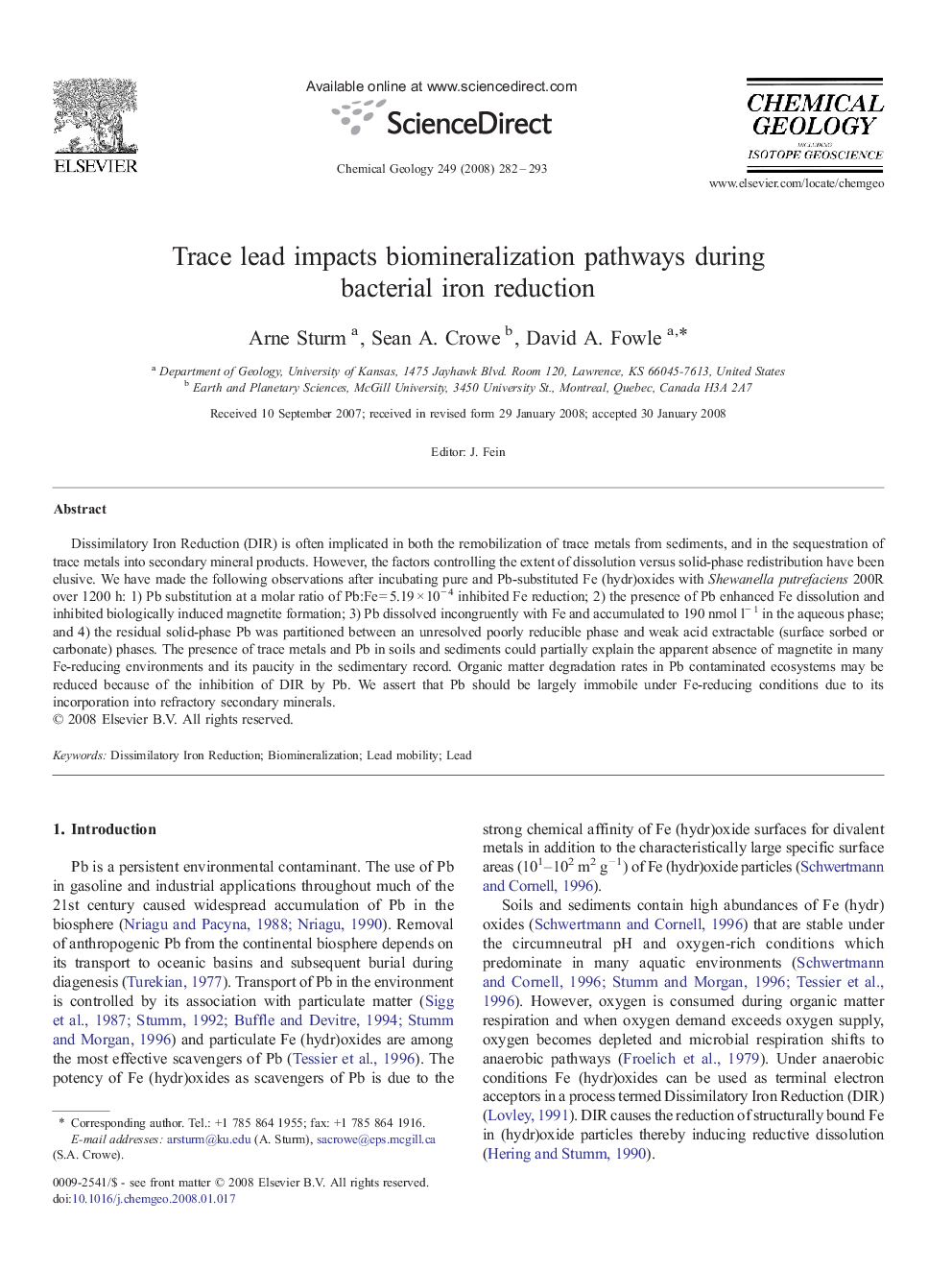| کد مقاله | کد نشریه | سال انتشار | مقاله انگلیسی | نسخه تمام متن |
|---|---|---|---|---|
| 4700768 | 1637731 | 2008 | 12 صفحه PDF | دانلود رایگان |

Dissimilatory Iron Reduction (DIR) is often implicated in both the remobilization of trace metals from sediments, and in the sequestration of trace metals into secondary mineral products. However, the factors controlling the extent of dissolution versus solid-phase redistribution have been elusive. We have made the following observations after incubating pure and Pb-substituted Fe (hydr)oxides with Shewanella putrefaciens 200R over 1200 h: 1) Pb substitution at a molar ratio of Pb:Fe = 5.19 × 10− 4 inhibited Fe reduction; 2) the presence of Pb enhanced Fe dissolution and inhibited biologically induced magnetite formation; 3) Pb dissolved incongruently with Fe and accumulated to 190 nmol l− 1 in the aqueous phase; and 4) the residual solid-phase Pb was partitioned between an unresolved poorly reducible phase and weak acid extractable (surface sorbed or carbonate) phases. The presence of trace metals and Pb in soils and sediments could partially explain the apparent absence of magnetite in many Fe-reducing environments and its paucity in the sedimentary record. Organic matter degradation rates in Pb contaminated ecosystems may be reduced because of the inhibition of DIR by Pb. We assert that Pb should be largely immobile under Fe-reducing conditions due to its incorporation into refractory secondary minerals.
Journal: Chemical Geology - Volume 249, Issues 3–4, 15 April 2008, Pages 282–293